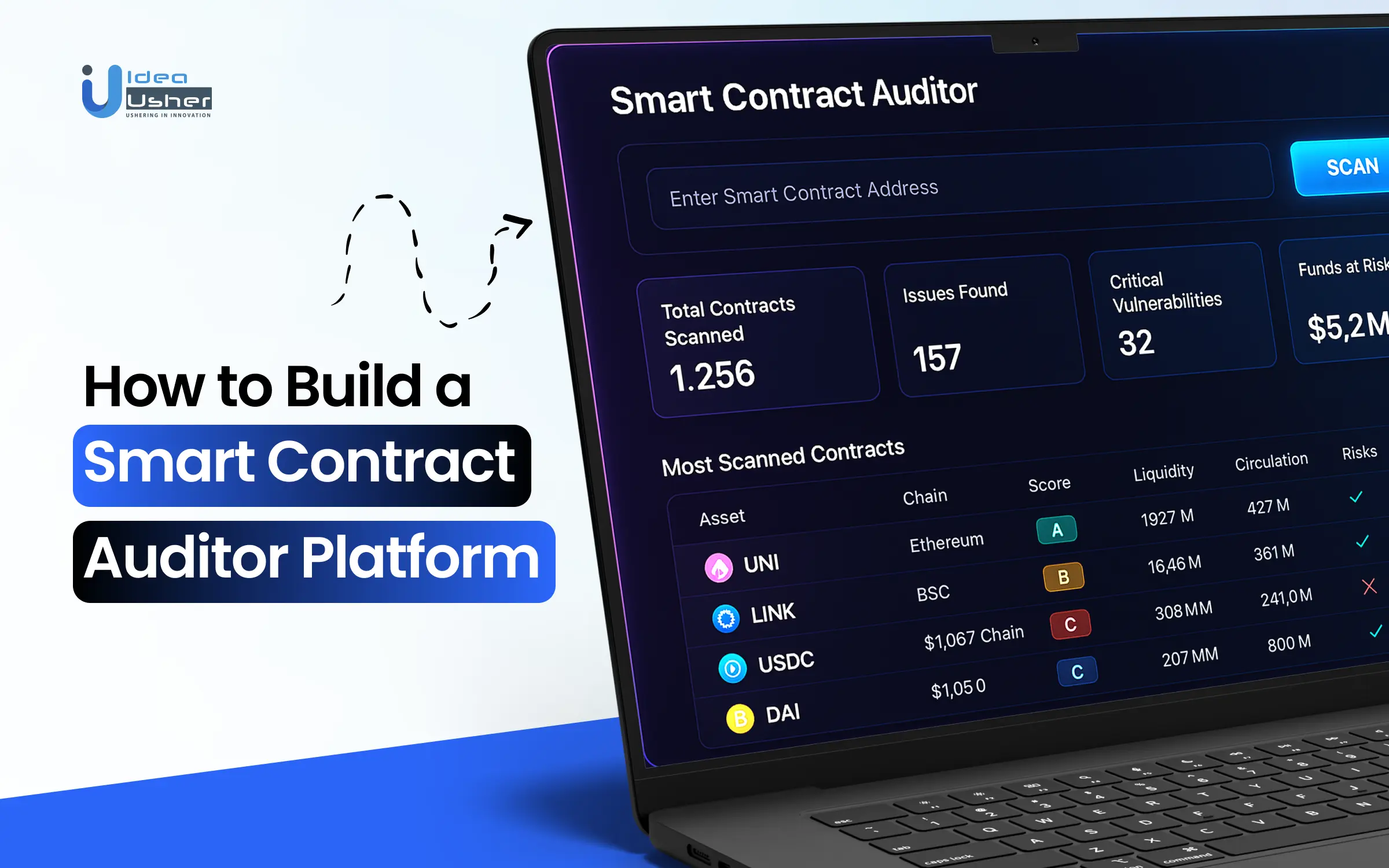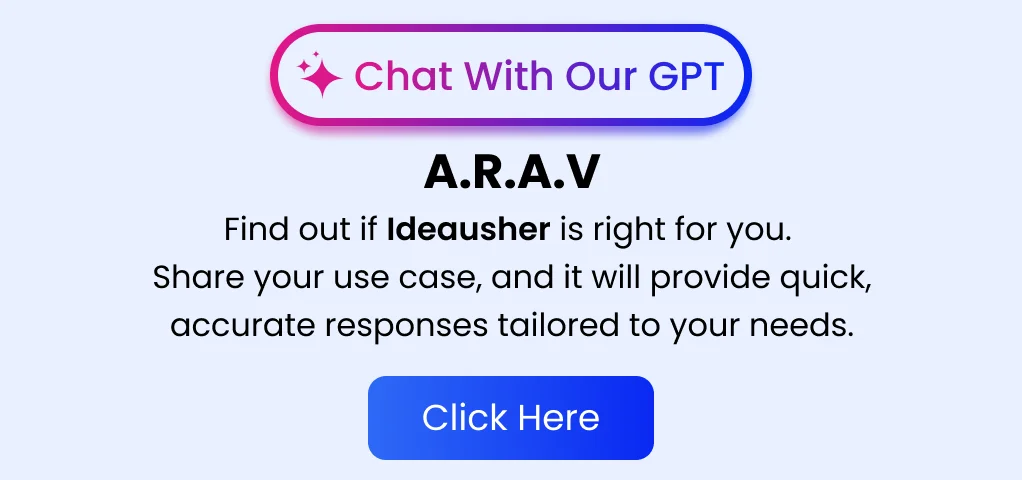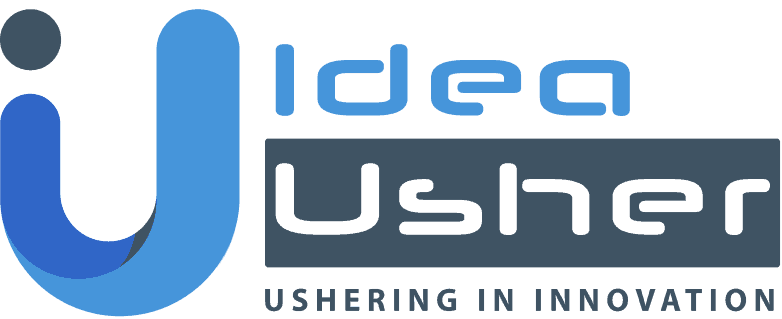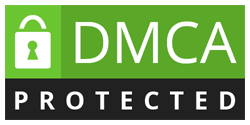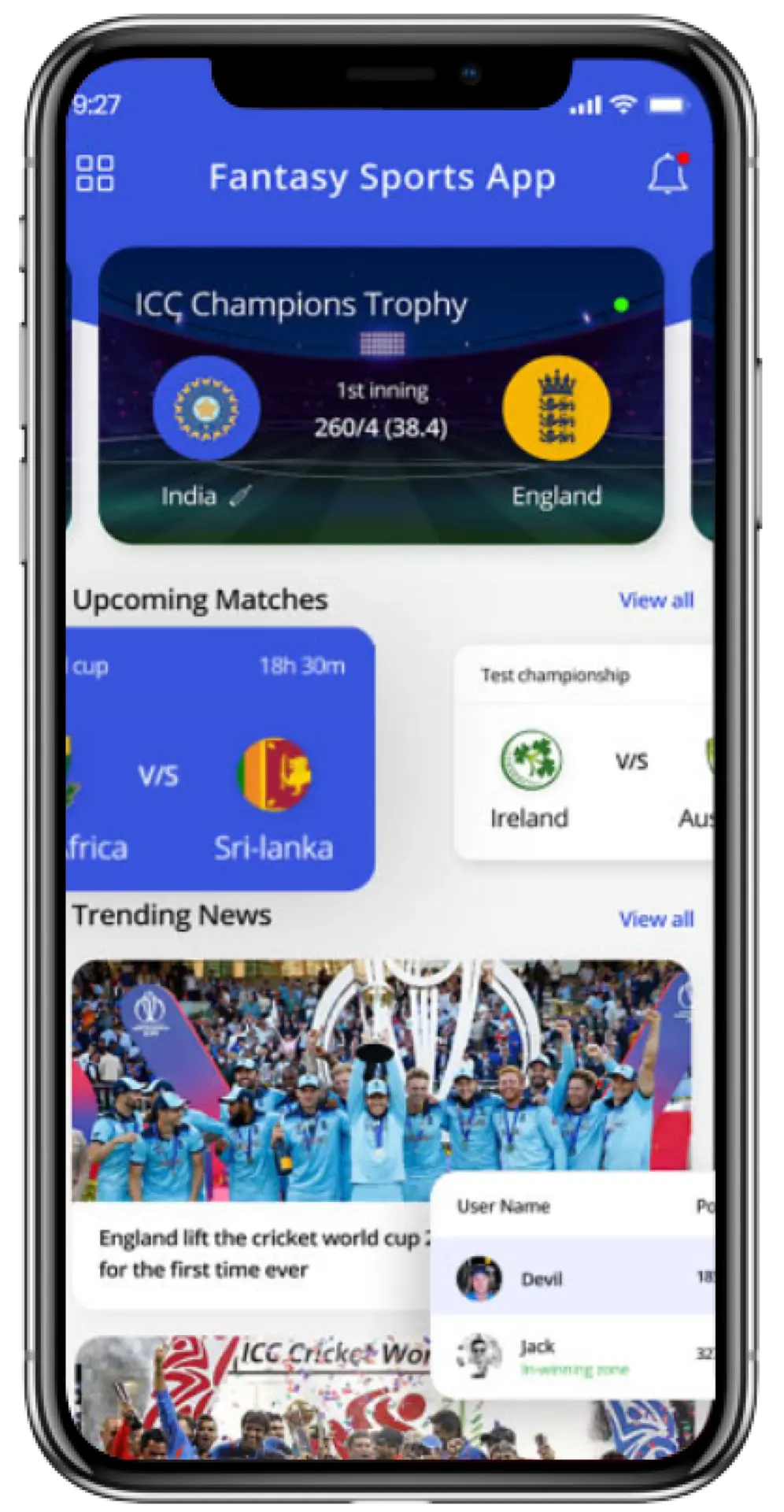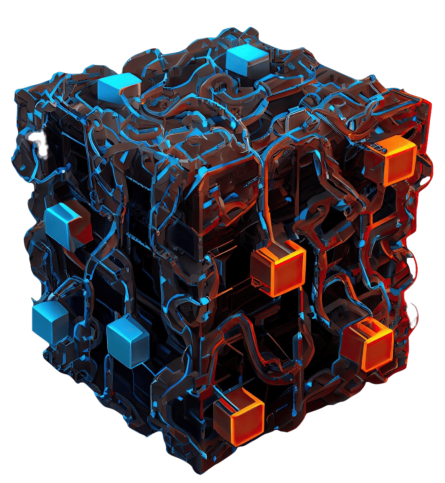Smart contracts are the foundation of most blockchain applications, from DeFi protocols to NFT marketplaces. While they offer automation and transparency, they are also prone to vulnerabilities that can lead to major financial losses if not audited properly. With increasing smart contract deployments across different chains, the need for automated, intelligent auditing solutions is stronger than ever.
In this blog, we will talk about how to build a smart contract auditor platform that leverages AI, static and dynamic analysis, and blockchain-specific threat detection. You will also learn what features make such tools effective, how to ensure they stay up to date with evolving threats, and the technology stack typically used to develop them.
As we have built end-to-end AI & blockchain platforms for numerous enterprises from different industries, IdeaUsher has the expertise to design auditor tools that are not only accurate but also adaptable to the rapidly changing threat landscape in the Web3 space.

Why You Should Invest in Launching a Smart Contract Auditor Platform?
According to Market.us, the industry is expected to expand from USD 4.3 billion in 2024 to USD 877.1 billion by 2034, growing at a CAGR of 70.2%. The forecast indicates significant growth opportunities in the coming decade.
Hypernative, a prominent smart contract auditing platform, secured $16 million in Series A funding and $40 million in Series B funding by mid-2025. Serving over 200 enterprise clients and monitoring over $100 billion in digital assets, it shows a solid product-market fit and signals high investor trust in AI-based threat intelligence for Web3.
BlockSec’s Phalcon, a significant player in the industry, secured $8 million in seed funding and gained recognition for real-time interception of multi-million dollar hacks. Its distinctive attack interception engine is now used by leading DeFi protocols.
The demand for a smart contract auditor platform is clear in the market size, as AI leads in automating security responses. Launching a smart contract auditing platform puts you at the forefront of Web3 innovation. This space offers significant commercial potential, strong developer adoption, and strategic importance in protecting decentralized ecosystems.
What Is a Smart Contract Audit Platform?
A smart contract audit platform is a specialized system that automatically analyzes blockchain-based code to detect security flaws, inefficiencies, and non-compliance with industry standards. These platforms combine static analysis, formal verification, and AI techniques to uncover vulnerabilities like reentrancy, overflow, and access control issues. By integrating with GitHub or CI/CD pipelines, they streamline the audit lifecycle, enabling faster, scalable, and more accurate contract validation before deployment.
Difference Between Manual Auditing & Automated Auditing
Before developing your own smart contract auditor, it’s crucial to understand how manual auditing differs from automated auditing. Each approach has its own strengths, and many auditing platforms today combine both to maximize coverage and accuracy.
| Criteria | Manual Auditing | Automated Auditing |
| Accuracy | High for complex logic but depends on auditor expertise | High for known patterns but may miss complex logic vulnerabilities |
| Speed | Slower; can take days to weeks depending on contract complexity | Fast; can scan code in minutes |
| Scalability | Limited; requires experienced auditors per project | Scales easily to thousands of contracts |
| Detection of Known Issues | Relies on auditor knowledge and checklists | Uses CVE/SWC databases for consistent detection of known vulnerabilities |
| Contextual Analysis | Strong in interpreting business logic and intent | Limited contextual understanding; focuses on code patterns |
| Consistency | Varies based on individual skills | High consistency across audits |
| Integration | Manual reports; harder to embed into CI/CD pipelines | Easily integrates with CI/CD, GitHub, Etherscan, etc. |
| Exploit Simulation | Can simulate edge cases with custom scripts | Some tools (e.g., Foundry-integrated) support automated exploit simulation |
| Best Use Case | High-risk DeFi apps, protocol audits, novel architecture | Quick scans, routine checks, and large-scale screening of known vulnerabilities |
How Does a Smart Contract Auditor Platform Work?
A smart contract audit platform typically follows a structured pipeline to deliver precise, efficient, and automated vulnerability analysis. Below is a clear breakdown of how each stage works, including the technologies and tools that power them.
1. Smart Contract Ingestion and Input
Developers start by submitting their contracts using GitHub links, CLI tools, or direct .sol file uploads. Behind the scenes, tools like Webhooks, IPFS, or EVM-compatible CLI plugins securely handle the submission, integrating smoothly into the developer’s CI/CD pipeline.
2. Static Code Analysis
Once uploaded, the contract is scanned using static analysis tools such as Slither, Mythril, or Solhint. These tools convert the code into ASTs (Abstract Syntax Trees) using parsers like ANTLR, enabling the detection of issues like reentrancy, visibility errors, or unused logic.
3. AI-Powered Vulnerability Detection
At this stage, LLM-powered models examine the smart contract to catch complex logic flaws that static tools might miss. Models like CodeBERT, StarCoder, or fine-tuned GPT variants analyze code context using techniques like prompt chaining and RAG (Retrieval-Augmented Generation).
4. Symbolic Execution and Fuzz Testing
The platform simulates potential attack paths using tools like Echidna, Manticore, or MythX. These rely on symbolic execution, fuzzing, and SMT solvers like Z3 to trigger edge-case conditions and detect runtime vulnerabilities such as overflow, front-running, or unchecked return values.
5. Risk Classification Engine
Detected vulnerabilities are automatically scored using frameworks like SWC Registry and customized CVSS-like models. Risk is classified based on severity, exploitability, and impact, often supported by Bayesian classifiers or knowledge graphs for context-aware risk prioritization.
6. Audit Report Generation
The platform then compiles a detailed audit report in PDF or Markdown format. Using templating engines like Jinja2 and custom NLP rewriters, the system presents each issue with severity tags, technical description, and remediation suggestions that developers can act on immediately.
7. CI/CD and Version Tracking
Smart contract auditing integrates directly into CI/CD pipelines such as GitHub Actions, GitLab CI, or Jenkins. The platform uses Merkle tree hashing, IPFS versioning, and Dockerized microservices to track every change and automatically re-audit any new code deployments.
8. Developer Dashboard and Insights
Finally, developers access a centralized dashboard built using React, Web3.js, and Tailwind, backed by Node.js or Rust microservices. All findings, trace logs, patch history, and alerts (via Slack, email, or Telegram) are stored using PostgreSQL or MongoDB for real-time analysis.
Key Features to Include in a Smart Contract Auditor Platform
Understanding the distinction between a basic scanner and a comprehensive auditor is crucial before adding features to your smart contract auditing platform. Key features include deep analysis, cross-chain compatibility, secure CI/CD pipelines, and transparent reporting to foster trust with users and developers.
1. AI-Powered Vulnerability Detection
Leverage fine-tuned large language models like SmartLLM and SmartAuditFlow to identify flaws such as reentrancy attacks, logic bugs, integer overflows, and improper access control. These AI engines outperform static-only tools by continuously adapting to new exploit data, reducing false positives and enhancing detection precision in your smart contract auditor platform.
2. Hybrid Static & Dynamic Analysis
Integrate static analyzers such as Slither, Mythril, and Securify with dynamic testing tools like Echidna, Oyente, and Manticore. This hybrid approach allows your platform to uncover both code-level vulnerabilities and runtime issues using fuzzing, symbolic execution, and behavior-based testing for robust smart contract auditing.
3. Severity Scoring & Risk Classification
Assign each vulnerability a severity score of Critical, High, Medium, or Low, along with a cumulative risk metric. A smart contract auditing platform that includes risk classification not only prioritizes repairs but also helps developers understand how issues impact operational and governance logic.
4. Development Workflow Integration
Ensure your auditor integrates with CI/CD environments like GitHub Actions and frameworks such as Hardhat and Truffle. This lets dev teams enforce security checks on pull requests, avoid unsafe merges, and embed smart contract security audits into their daily workflows.
5. Cross‑Chain and Standard Compliance Checks
Conducts audits across different chains such as Ethereum, BNB Chain, Arbitrum, and Avalanche while verifying standards like ERC-20, ERC-721, and ERC-4626. An open-source, cross-compatible auditor provides scalability and relevance across changing Layer 1 and Layer 2 ecosystems.
6. Explainable Audit Reports & XAI Panel
Provide clear, natural-language audit summaries with severity scores, code locations, and suggested fixes. A built-in Explainable AI panel helps users understand why specific vulnerabilities were flagged, promoting transparency and trust in automated smart contract audits.
7. Formal Verification & Mutation Testing Support
Offer formal methods using tools like Certora Prover, K Framework, and Vertigo-rs to mathematically verify invariants. Combine this with mutation testing to check test coverage and robustness, elevating your smart contract auditing platform beyond typical code reviews.
8. Invariant & Simulation Testing
Use fuzzing tools such as Foundry and Echidna to test smart contracts against edge cases and unexpected inputs. Invariant testing helps validate key behaviors under stress, which is especially important for DeFi smart contracts with complex logic and state changes.
9. Visualization & Code Flow Graphs
Incorporate visual tools like control-flow graphs and call graphs that help users understand smart contract architecture. Intermediate representations like SlithIR offer deeper insights, making your smart contract auditor both developer-friendly and review-efficient.
10. Report Export, Audit Trails & Governance Logs
Let users export audits in PDF or JSON and maintain immutable audit logs stored either off-chain or on-chain. This is key for regulatory compliance and DAO governance, enabling transparent documentation and traceability of every audit performed.
11. Gas Usage Insights & Optimization Warnings
Analyze smart contract gas efficiency using tools like Hardhat Gas Reporter. Offer suggestions for reducing transaction costs and avoiding potential DoS vulnerabilities caused by high gas consumption, ensuring better performance and affordability for end-users.
12. Wallet & GitHub Integration for Code Fetching
Enable users to pull verified smart contract code directly from GitHub repositories or associated crypto wallets. This ensures source code authenticity and supports continuous audit cycles, making your open source auditor more reliable and secure.
13. Developer Portal & Audit API Access
Provide a web-based developer dashboard that includes past audits, testing simulations, vulnerability insights, and scheduling tools. Offer REST or GraphQL API access so external apps or dev teams can plug your smart contract auditing platform into their build pipelines.

Step-by-Step Development Process of a Smart Contract Auditor Platform
Building a modern smart contract auditor platform requires more than just integrating scanners. Our approach blends AI, open source tools, and continuous monitoring to ensure real-world contract safety. Below is how our blockchain developers build such platforms step-by-step.
1. Consultation
Our blockchain developers begin by analyzing your smart contract use case, scope, and potential vulnerabilities. We evaluate whether the smart contract auditor will target DeFi, DAO, or enterprise workflows. This step ensures the platform is tailored to real audit demands, including role-based access, compliance, and expected reporting standards.
2. Smart Contract Analysis Engine Integration
We integrate tools like Slither, Mythril, and Echidna into the backend of the smart contract auditing platform. These engines help identify opcode-level bugs, race conditions, and reentrancy threats. Our developers customize logic detection to ensure compatibility with both Solidity and Vyper contracts, building a reliable foundation for vulnerability discovery.
3. AI & ML Layer for Predictive Vulnerability Detection
Our engineers train an AI layer using past exploits, AST trees, and opcode patterns. This helps the smart contract auditor detect zero-day risks and logic bugs beyond what static tools find. We fine-tune this ML model using reinforcement feedback from known bug datasets and open source vulnerability repositories.
4. Risk Scoring & Reporting Module
We create a scoring engine that classifies vulnerabilities into Critical, High, Medium, or Low. Reports are generated in natural language with detailed remediation advice. Our developers also build JSON and PDF exports so the smart contract auditing platform integrates seamlessly with team workflows, governance boards, and compliance reviews.
5. Blockchain & Wallet Integration
Our blockchain developers enable live contract fetching from networks like Ethereum and BNB Chain using APIs from Etherscan. We integrate MetaMask and WalletConnect for deployment access. This ensures the smart contract auditor tool can test both in-development and deployed contracts without manual upload or repo syncing.
6. Real-Time Monitoring & Re-Audit Scheduling
We implement real-time security agents that scan for post-deployment anomalies, contract upgrades, or event-driven threats. Our developers also configure a re-audit scheduler to trigger periodic checks. This transforms your open source auditor or private tool into a proactive, always-on monitoring system that evolves with contract updates.
7. Build a Clean Frontend Dashboard
Our frontend team builds a responsive dashboard using React and Tailwind. It visualizes risk graphs, heatmaps, call stacks, and contract flows. Every smart contract auditor needs a clean UI to help devs and security teams quickly interpret scan results and understand audit reasoning at a glance.
8. Developer Tools, GitHub Sync & API Access
We integrate GitHub for repo-level sync and CI/CD triggers. Developers can run audits during pull requests. We also expose REST APIs so your smart contract auditing platform can be integrated into external SaaS, testing pipelines, or third-party dashboards for real-time feedback during code development.
9. Testing & QA
After integrating all engines and AI models, our QA team runs extensive tests using real-world exploits and known CVEs. Manual checks by blockchain security experts verify results. This hybrid layer ensures the smart contract auditor flags real issues and avoids noise or misleading vulnerability outputs.
10. Launch & Gather Feedback
Post-launch, we set up a user feedback loop to improve model accuracy and reporting clarity. Our developers also configure versioned audit logs and a patch alert system. This makes your smart contract auditing platform resilient to new threats while helping dev teams stay audit-ready at all times.
Cost to Develop a Smart Contract Auditor Platform
Building a smart contract auditing platform with AI and multi-chain capabilities requires specialized talent, tool integration, and robust backend logic. Below is a detailed cost breakdown of each development phase based on real-world benchmarks and typical Web3 project scopes.
| Development Phase | Estimated Cost | Description |
| Consultation | $6,000 – $10,000 | In-depth scoping, architecture blueprinting, compliance checks, and roadmap definition. |
| UI/UX Design | $5,000 – $8,000 | Visual layout for auditor dashboard, vulnerability reports, and user workflows. |
| Audit Engine Integration | $12,000 – $25,000 | Advanced integration of static/dynamic tools (Slither, Mythril, Echidna, etc.) |
| AI Model Development | $20,000 – $48,000 | Fine-tuning LLMs for code pattern detection, explainability layer, and zero-day spotting. |
| Frontend & Dashboard Dev | $10,000 – $18,000 | Building dashboards with live call graphs, scan status, and report exports. |
| Backend & API Dev | $15,000 – $40,000 | Smart contract parsing, multi-user logic, API orchestration for audit lifecycle. |
| Blockchain Integration | $17,000 – $30,000 | Fetching on-chain contracts, wallet reads, GitHub sync, and network compatibility. |
| Testing & QA | $7,000 – $10,000 | Deep testing of detection logic, accuracy validation, regression, and false positives. |
| Deployment & DevOps | $4,000 – $6,000 | Cloud deployment, CI/CD setup, monitoring pipelines, and security patches. |
| Post-Launch Support | $3,000 – $5,000/month | Retainer for threat updates, bug fixes, model retraining, and re-audit engine upgrades. |
Total Estimated Cost: $70,000 – $135,000
Note: The final development cost varies based on feature complexity, supported chains, and AI integration level. Enterprise platforms with real-time monitoring and API access are usually at the higher end of the estimate range.
Consult IdeaUsher for a detailed walkthrough with blockchain experts specializing in smart contract auditing platforms that integrate AI, security, and usability whether you need an open-source auditor or a comprehensive auditing platform.
Tech Stacks for Developing a Smart Contract Auditor Platform
To build a smart contract auditing platform, a well-defined tech stack is essential. Each tool and framework plays a role in ensuring secure, real-time, and scalable operations across blockchain layers, backend infrastructure, frontend UI, and reporting systems.
1. Blockchain Interaction
Modern auditing platforms use robust blockchain access libraries and node providers to interact with on-chain data efficiently.
- Ethers.js / Web3.js: Widely used JavaScript libraries that connect to Ethereum-compatible blockchains. They enable reading contract states, sending transactions, and subscribing to smart contract events seamlessly.
- Alchemy / Infura: These node-as-a-service platforms provide reliable and scalable access to blockchain networks without managing full nodes, supporting fast querying and consistent uptime.
2. Audit Engines
Open-source security tools and AI-powered scanners are key to automating vulnerability detection in smart contracts.
- Slither / Mythril / Foundry: Static and dynamic analysis tools that detect issues like reentrancy, overflow, access control flaws, and gas inefficiencies. They are essential for scanning Solidity codebases before deployment
- AI/ML Models for Vulnerability Classification: Custom-trained models are used to categorize detected issues by severity, eliminate noise, and rank the most critical vulnerabilities for faster remediation.
- OpenZeppelin Contracts and Defense Libraries: Industry-standard libraries help validate code quality by comparing audit targets against best practices and secure contract implementations.
3. Backend Infrastructure
The backend architecture supports real-time analysis, data processing, and secure communication across components.
- Node.js / FastAPI: Serve as the backbone for API management, task orchestration, and integrating the auditing tools with AI modules and databases.
- PostgreSQL / Redis: PostgreSQL handles relational data such as user scans and reports, while Redis supports high-speed caching, temporary data, and task queuing.
- Kafka for Event Streaming: Provides reliable streaming for asynchronous processing between audit jobs, AI classifiers, alert triggers, and data storage
4. Frontend Interface
A clean and reactive UI helps users view audit results, configure settings, and monitor system activity.
- React or Next.js: Frameworks that support a dynamic frontend experience for viewing audit reports, scanning status, and managing user workflows.
- Tailwind / Chart.js: Tailwind accelerates UI development with utility-first CSS, while Chart.js allows real-time graphs and data visualizations for risk scores and vulnerability trends.
5. Reporting & Notifications
Reporting and alerting features ensure that vulnerabilities are communicated clearly and promptly.
- Webhooks / PDF Generation: Enable integration with CI/CD pipelines for automated alerts and export of audit results in PDF format for stakeholders or compliance documentation.
- Slack / Email / Telegram Integration: Multi-channel notifications ensure that developers and security teams are instantly alerted about audit results, high-risk vulnerabilities, or suspicious changes.
Monetization Models for Smart Contract Auditor Platform
A smart contract auditing platform can generate revenue from startups, Web3 projects, enterprises, and independent developers. Here are some proven business models that can sustain and scale with the platform’s growth and trust in the blockchain ecosystem.
1. Pay-per-audit reports
The pay-per-audit model allows users to submit contracts for one-time scans and receive full vulnerability assessments. This suits early-stage projects or seasonal audits. Each report from the smart contract auditing platform typically includes security issues, fixes, severity classification, and a trust-verification certificate.
2. Monthly SaaS subscription
This model provides developer teams with continuous access to audit tools, dashboards, and auto-reports through monthly billing. It works well for protocols with frequent deployments that need ongoing support from the smart contract auditing platform without relying on third-party auditors each time.
3. API access pricing tier
A pricing structure based on API usage allows integrations into custom pipelines. DevOps teams and platforms can programmatically trigger audits, receive JSON outputs, and embed results into CI/CD flows while depending on the smart contract auditing platform for backend threat detection.
4. B2B licensing to audit firms
Licensing the platform’s core engine to firms or exchanges enables white-label use. Audit companies benefit from internalizing automation while exchanges gain tools for vetting tokens. The smart contract auditing platform becomes part of their private infrastructure and compliance workflows.
5. Freemium model with paid security reports
In a freemium setup, users can access basic audit functionality for free, such as syntax-level checks. To unlock advanced features like PDF/Markdown reports, exploit simulations, and formal verification insights, they must upgrade via the smart contract auditing platform’s paid tiers.
6. Custom audits and add-on services
For specialized needs, platforms can offer premium services such as manual review, regulatory compliance support, or chain-specific modules. These custom layers expand the utility of the smart contract auditing platform, especially for DAOs, fintech startups, or layer-2 protocols with unique frameworks.
Top Smart Contract Auditor Platforms in 2025
As blockchain applications scale, auditing needs smarter and faster solutions. These platforms use a mix of AI automation and blockchain-native tooling to deliver in-depth audits that reduce vulnerabilities, enhance performance, and support continuous monitoring across decentralized protocols.
1. CertiK
CertiK uses AI engines like Skynet to monitor smart contracts across blockchains continuously. It combines static analysis with threat intelligence, scoring vulnerabilities based on live on-chain activity and audit trails, making audits proactive rather than just code-deep.
2. ConsenSys Diligence
ConsenSys Diligence integrates blockchain-native tools with simulation and formal methods, including MythX, to detect bugs at the EVM level. Their audits rely on symbolic execution and AI-supported runtime verification to uncover complex security flaws beyond standard manual review.
3. ChainGPT
ChainGPT performs real-time smart contract auditing using large language models trained on blockchain code. It parses contracts across Ethereum and BNB Chain, flags issues with AI-driven classification, and suggests fixes using blockchain context to generate audit-ready reports instantly.
4. Hashlock
Hashlock combines human analysis with blockchain-focused AI tooling. Their audits leverage smart detection engines trained on attack patterns and integrate with project smart contracts directly, enabling quick identification of logic errors and security gaps in multi-chain deployments.
5. Quantstamp
Quantstamp integrates AI classification and blockchain telemetry to monitor and audit contracts at scale. It uses machine learning to detect abnormal behavior, while its auditing engine cross-references historical blockchain vulnerabilities, ensuring accurate assessments across networks like Ethereum and Solana.
Conclusion
Building a smart contract auditor platform is a strategic step toward ensuring security, transparency, and trust in blockchain ecosystems. With the increasing complexity of decentralized applications, manual reviews alone are no longer enough. Integrating AI, static analysis, and real-time scanning can significantly enhance the accuracy and speed of audits. A well-designed platform not only helps detect vulnerabilities early but also supports continuous compliance and risk mitigation. By focusing on scalability, automation, and accuracy, development teams can deliver tools that serve evolving Web3 ecosystems. Investing in such platforms contributes to a more secure and resilient blockchain environment for users and developers alike.
Why Partner with IdeaUsher to Build Your Smart Contract Auditor Platform?
At IdeaUsher, we specialize in developing AI-powered auditing tools that go beyond surface-level scans. Whether you’re building a platform for DeFi, NFT protocols, or Layer-2 solutions, we help you deliver automated, explainable, and secure contract auditing at scale.
Why Work with Us?
- Smart Contract Security Expertise: We bring deep knowledge of EVM-compatible chains, formal verification tools, and audit frameworks to ensure high detection accuracy.
- AI and Blockchain Integration: Our team builds platforms that combine machine learning with on-chain analytics for next-gen audit intelligence.
- Developer-First Approach: We design intuitive dashboards, GitHub integrations, and automation workflows to streamline the audit process.
- Scalable Architecture: From MVP to enterprise-grade, we create modular platforms that support continuous audits, versioning, and chain-specific logic.
Explore our portfolio to see how we’ve built blockchain platforms that power secure Web3 ecosystems.
Connect with us to build your own smart contract auditing platform tailored to your vision.
Work with Ex-MAANG developers to build next-gen apps schedule your consultation now
FAQs
It should enable static and dynamic analysis, AI-assisted vulnerability detection, severity scoring, remediation advice, and integration with CI/CD pipelines. These capabilities help ensure accurate and actionable contract reviews early in development.
Effective auditors combine tools like Mythril, Slither, Echidna, and Certora Prover for symbolic execution, fuzz testing, static analysis, and formal verification to detect complex vulnerabilities and logic flaws.
AI models can interpret code semantics, flag nuanced patterns, suggest fixes, and assign context-aware risk levels. This speeds up reviews and reduces reliance on manual checks while maintaining robust accuracy.
Yes. The platform can support multiple EVM chains by integrating chain-specific rulesets and parsing logic, making it adaptable to different environments while providing centralized dashboards and reports.
